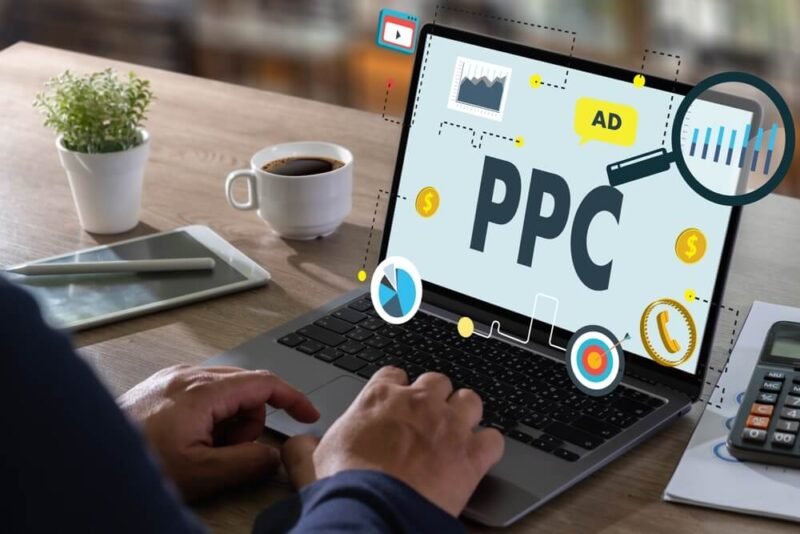Pay-per-click (PPC) campaigns are one of the most effective ways to drive traffic to your website and grow your business. Whether you are a small business or a large corporation, a well-planned PPC campaign can make a significant difference in reaching potential customers. For businesses in San Francisco, where the competition is high and the market is fast-paced, creating a high-impact PPC campaign is essential for standing out.
In this article, we’ll walk through how to create a high-impact PPC campaign, focusing on easy-to-understand strategies that work in the competitive San Francisco market. These steps can be used by anyone, even if you’re new to digital marketing, to drive results and improve your return on investment (ROI).
1. Understanding What PPC Is
Before diving into strategies, it’s essential to understand what PPC is. PPC is a form of online advertising where you pay each time someone clicks on your ad. The most popular platforms for PPC include Google Ads, Facebook Ads, and Bing Ads. With PPC, you’re not paying for the ad to be displayed — you only pay when someone clicks on your ad, which makes it a cost-effective way to get targeted traffic.
For example, if you run a restaurant in San Francisco and you want to attract more local customers, you could set up a PPC campaign targeting people searching for “best restaurants in San Francisco.” Every time someone clicks on your ad, you pay a small fee to the platform, but you’re driving a potential customer to your website.
2. Why PPC Campaigns Are Important in San Francisco
San Francisco is a bustling city known for its technology-driven economy and competitive market. If you’re running a business in this city, whether it’s in tech, retail, hospitality, or any other industry, PPC campaigns can help you reach local customers who are searching for products or services like yours.
The high cost of living and doing business in San Francisco means that every marketing dollar needs to count. With PPC, you can target specific audiences, control your budget, and track the effectiveness of your ads in real time. This makes PPC particularly valuable for businesses in San Francisco, where competition is fierce.
3. Steps to Create a High-Impact PPC Campaign
Now that we’ve covered the basics, let’s move into how to create a PPC campaign that delivers results.
Step 1: Define Your Goals
The first step in creating any successful PPC campaign is defining your goals. Ask yourself what you want to achieve. Are you looking to drive more traffic to your website? Increase online sales? Generate more leads? Your goal will determine how you structure your campaign.
For example, if you own a boutique in San Francisco, your goal might be to get more local foot traffic or sell more items online. Defining your goals clearly will help you track the success of your campaign and make adjustments when needed.
Step 2: Research Keywords
Keywords are the foundation of a PPC campaign. Keywords are the search terms people use when looking for products or services like yours. Using the right keywords ensures that your ads are shown to the right audience. Google’s Keyword Planner is a great tool to help you find relevant keywords for your business.
Let’s say you run a tech startup in San Francisco. You might target keywords like “tech consulting in San Francisco” or “IT support in San Francisco.” These specific terms will attract users who are searching for services in your area.
Step 3: Target Your Audience
Audience targeting is crucial for PPC success, especially in a city like San Francisco with a diverse population. You can use various factors to target your audience, such as location, age, gender, and interests.
For local businesses in San Francisco, it’s important to target people within the city or nearby areas. Most PPC platforms allow you to set geographic boundaries, so your ads will only be shown to users in San Francisco or surrounding regions.
If you run a vegan café, for example, you could target people within San Francisco who have shown an interest in vegan food or healthy eating. This ensures that your ad is being seen by people who are most likely to visit your café.
Step 4: Set a Budget
One of the biggest advantages of PPC is that you control your budget. You can set a daily budget, and once that budget is reached, your ads will stop showing for the day. This helps ensure you don’t overspend.
When setting your budget, consider your industry and competition in San Francisco. For highly competitive industries like tech, you may need to allocate a higher budget to compete effectively. However, if you run a smaller local business, you can still see results with a more modest budget.
Step 5: Write Compelling Ad Copy
Your ad copy needs to grab the attention of users and encourage them to click on your ad. In San Francisco, where people are always on the move and often multitasking, it’s important to keep your ad copy concise and engaging.
For example, if you’re advertising a fitness studio, your ad copy could be: “Looking for the best fitness studio in San Francisco? Get your first class free! Sign up today!” This copy clearly states what the business offers, includes a call to action, and gives users a reason to click.
Step 6: Create a Landing Page
Once someone clicks on your PPC ad, they’ll be directed to a landing page on your website. Your landing page should be directly related to the ad and designed to convert visitors into customers. For example, if your ad promotes a discount, your landing page should include information about that discount and an easy way for users to take advantage of the offer.
In a competitive market like San Francisco, an effective landing page can make or break your PPC campaign. Keep the page simple, clear, and focused on the goal, whether that’s making a purchase, signing up for a newsletter, or booking an appointment.
Step 7: Track and Optimize Your Campaign
Once your PPC campaign is live, it’s important to track its performance and make adjustments as needed. Most PPC platforms, like Google Ads, provide detailed analytics, allowing you to see which keywords are performing well, how much traffic your ads are driving, and whether your goals are being met.
By tracking the data, you can identify which aspects of your campaign are working and which areas need improvement. For example, if certain keywords aren’t generating clicks, you can replace them with better-performing ones. Or, if your ad copy isn’t engaging enough, you can test new variations to see what resonates with your audience.
Conclusion
Creating a high-impact Pay Per Click in San Francisco requires careful planning, research, and ongoing optimization. By defining your goals, targeting the right audience, and using the best keywords, you can create a campaign that drives traffic and generates leads. With these simple, easy-to-understand strategies, you can ensure your PPC campaign makes a big impact, even in the highly competitive San Francisco market. Thank visiting nytimer.uk




